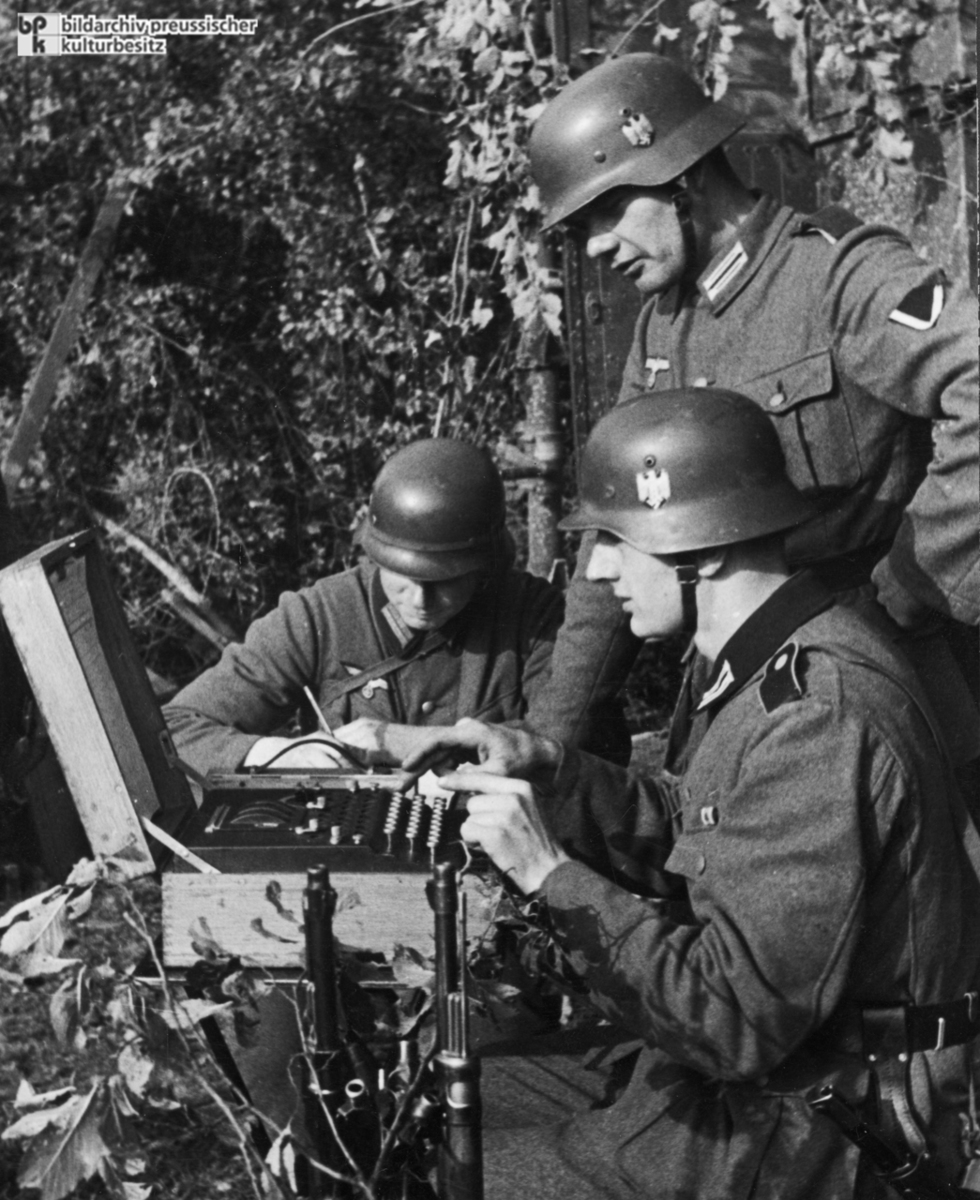Enigma Electro-Mechanical Cypher Machine being used by the German Wehrmacht in France (1940)
Abstract
In the history of modern German clandestine knowledge, no piece of technology competes in global significance with the Enigma machine. Developed after World War I by the German engineer Arthur Scherbius (1878-1929), versions of this electro-mechanical rotor cipher machine were put to use by various national governments, including Nazi Germany. The Enigma machine relied on a complex combination of mechanical and electrical subsystems to scramble messages, with the end result being phenomenal encryption security. This security confounded the Allies during World War II, especially in the Battle of the Atlantic, which was critical for the naval resupply of Britain, and, in fact, for all Allied forces fighting in North Africa, the Mediterranean, and continental Europe. Cracking the Germans’ Enigma cipher was therefore a leading Allied objective. Efforts toward reaching this goal were largely based in Bletchley Park in Buckinghamshire, England. Scholars now believe that cracking the Enigma code dramatically shortened the war and laid important theoretical and technical foundations for constructing the world’s first computers.
Source

Source: Enigma Electro-Mechanical Cypher Machine being used by the German Wehrmacht in France. Photographer: E. Bauer. October 10, 1940. Location: near Hesdin (Pas-de-Calais).
© bpk / E. Bauer